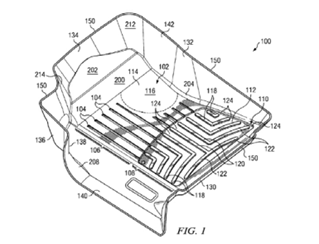The US Court of Appeals for the Federal Circuit vacated and remanded a Patent Trial & Appeal Board non-obviousness decision, finding that the context of the proposed combination of prior art in the Board’s obviousness inquiry was not directed toward the context of the claim at issue. Axonics, Inc. v. Medtronic, Inc., Case No. 21-1451 (Fed Cir. July 10, 2023) (Lourie, Dyk, Taranto, JJ.)
Axonics filed petitions for inter partes review (IPR) challenging the validity of two patents owned by Medtronic as obvious. During the IPRs, the Board analyzed two prior art references, an article titled, “Electrical Stimulation of the Trigeminal Nerve Root for the Treatment of Chronic Facial Pain” by Ronald Young and a patent assigned to Gerber. The Medtronic patents described percutaneously positioning a lead to stimulate the sacral nerve. By contrast, Gerber described positioning an electrode in the sacral nerve region in a non-percutaneous way, and Young described positioning an electrode percutaneously to stimulate the trigeminal sensory root. The Board found that Medtronic’s patents were not obvious over Young in view of Gerber because of lack of motivation to combine the two prior art references. The Board also noted “that the proposed combination ‘would not be feasible in the trigeminal nerve region.’” Axonics appealed.
The Federal Circuit found that the Board erred in conducting the obviousness analysis. The Board’s proposed analysis centered on Young’s trigeminal sensory root context, not the Medtronic patents’ sacral nerve context. First, the Board questioned whether motivation to use the resulting combination of Young and Gerber existed in the trigeminal nerve context, but not in Medtronic patents’ sacral nerve context. Second, the Board found “that the relevant art [of the Medtronic patents] is medical leads specifically for sacral neuromodulation.”
Addressing the first error, the Federal Circuit explained that the prior art combination must be directed toward meeting the requirement of the claimed patent, not the requirement of the first prior art. The Court found that the Board did not conduct this analysis. Addressing the second error, the Court noted that “the relevant art” of the Medtronic patents was not “limited to medical leads for sacral-nerve stimulation.” The Court examined the specification of the patent as well as its claim and ruled that the scope of the Medtronic patents was broader than what the Board concluded.
The Court found that the Board’s errors were not harmless since the Board relied on these errors in rejecting Axonics’s obviousness arguments and provided no other reason for concluding Medtronic’s claims were not obvious. Therefore, the Court vacated the Board’s decision and remanded for further consideration.
Practice Note: In considering obviousness arguments under 35 U.S.C. § 103, keep in mind the difference between the claim at issue and the considered combination of prior art. The scope of the claim also needs to be considered based on the entirety of the patent.
Woohyeong Cho, a summer associate in the Washington, DC, office, also contributed to this case note.
read more

 Subscribe
Subscribe




